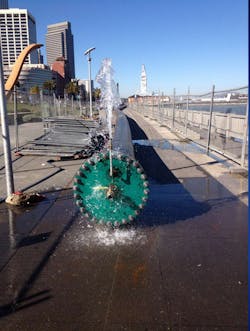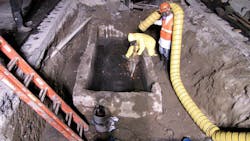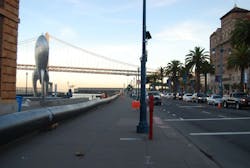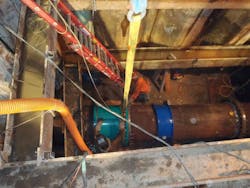About the author:
Cristina Tuser is associate editor for WWD. Tuser can be reached at [email protected].
Located in Bayview Hunters Point, California, the Southeast Treatment Plant (SEP) is in the midst of a mixed industrial, commercial and residential area. Some neighbors are only a street’s width away from the treatment plant. The SEP is San Francisco’s largest and oldest wastewater facility, responsible for treating nearly 80% of the city’s flow.
The SEP treats 57 million gallons per day (mgd) of wastewater, handling 160 wet tons of biosolids each day. During rainstorms, the plant can treat up to 250 mgd of wastewater. The wastewater is transported to the SEP through a grid of transport and storage facilities, sewers and five major pump stations.
The plant, which was built in 1952, has technology operating well beyond its useful life. By using the sewer system improvement program (SSIP), the treatment plant will undergo improvements and seismic upgrades. The sewer system was not built to withstand major earthquakes, and storm water runoff can overwhelm the system during heavy rains and lead to flooding in the neighborhood.
The SEP’s 36-inch steel sewer force main, for instance, has suffered from repeated failures.
The proposed SSIP improvements incorporated public input from the Southeast Digesters Task Force, an advisory group of neighborhood and business interests, who provided recommendations on reducing community impacts from overflows and other pipe failures. Increasing sewer system reliability and continuing to provide sewer services for approximately 350,000 people in the area were project goals. Protecting water quality and aquatic life in the bay were also crucial considerations that could be achieved by ensuring combined sewage is conveyed to the SEP.
The Force Main Rehabilitation at Embarcadero and Jackson Improvements (FMEJ) is a part of the SSIP and is a vital component of the city’s efforts to upgrade its aging combined sewer system. The project will rehabilitate or replace portions of the North Shore Force Main (NSFM), which are susceptible to failure. The force main is a pressurized sewer pipeline that transports combined wastewater in the northeastern part of San Francisco to the SEP. The team used a sliplining process for the project. Open cut or pipe bursting were also considered, but ultimately these options would not work.
Some of the main concerns were soil conditions and the impact construction would have on residents nearby, as noise during construction is unavoidable in most cases. Bay mud and fill from the 1900 earthquake could potentially cause sewer settlement problems, and leaks outside of the pipe could potentially lead to further settlement of the sewer line as well.
The existing site has undergone emergency repairs in 2008 and 2012, reaching the end of its useful life. Rehabilitating this component is critical to protect public health and the environment. Once the project is completed, the entire portion of the NSFM located outside the Jackson Street Transport/Storage Box will be able to protect against disruption of service and sewage overflows to the bay.
Initially, the project would have been started in March, but due to COVID-19, this had to be pushed back. Nevertheless, this $10 million dollar project is still slated to continue work around pandemic restrictions.
“SPFUC has a very robust process in terms of how we plan, design and execute a project,” said Bessie Tam, project manager. “We’re here not to disrupt your life, to stop traffic, we’re here because we want to make sure you can flush!”
According to Tam, even though the team is working in a small area, the email list for the mailing list for the project is over 500 email addresses, showing a major public interest.
“I’m happy, we’re doing the last piece of the force main. All of the community meetings, engaging with stakeholders, those are big accomplishments for me,” Tam added. “Most of the work was done by city staff as well. Coordination and collaboration, not just doing the planning and designing, especially being out there out on streets, constructing ... I think our construction team and contractor worked so well with the community. That was a huge highlight, a whole team effort.”
In the fall of 2020, crews will begin major excavation and foundation work to prepare for the new biosolid digesters. The digesters will be located closer to the Caltrain tracks and farther from residents, according to the San Francisco Public Utilities Commission.



